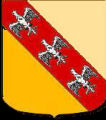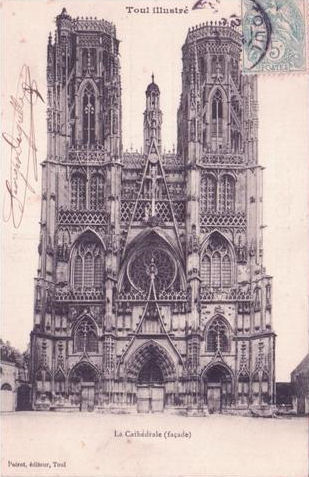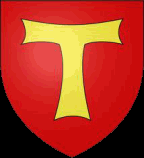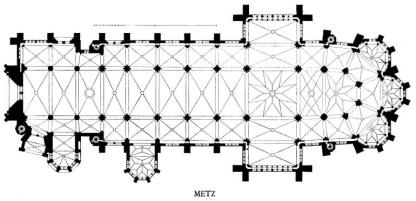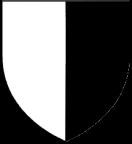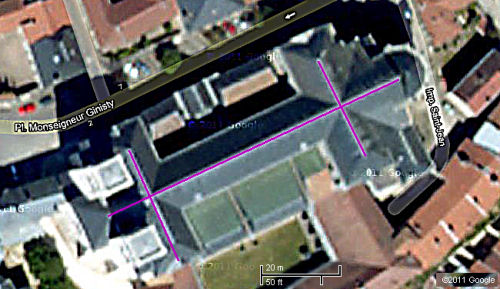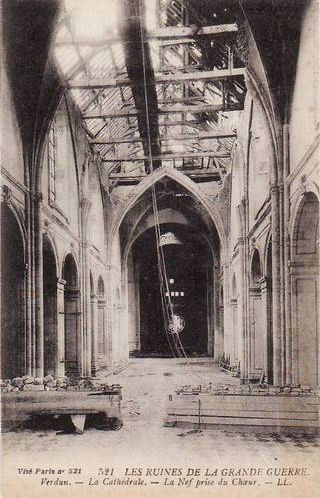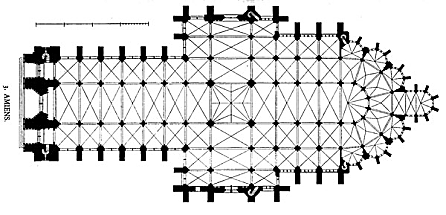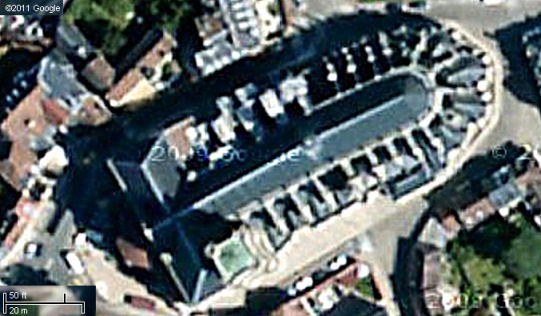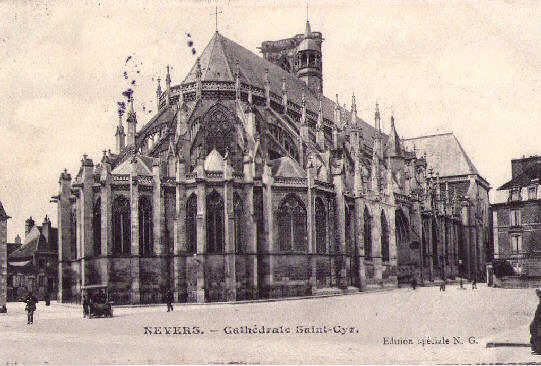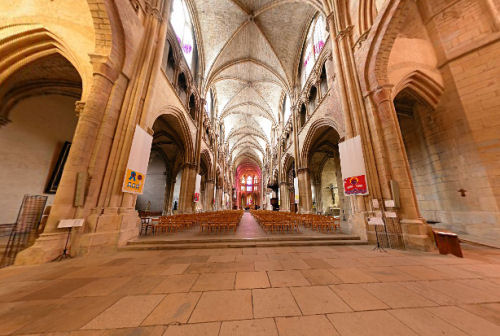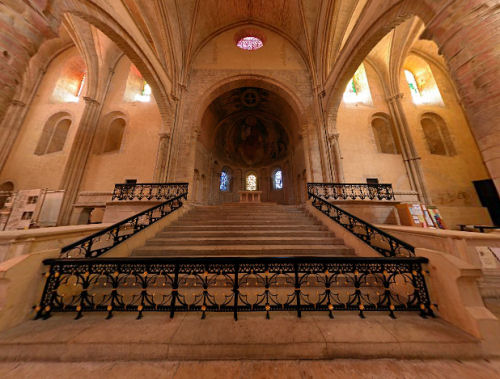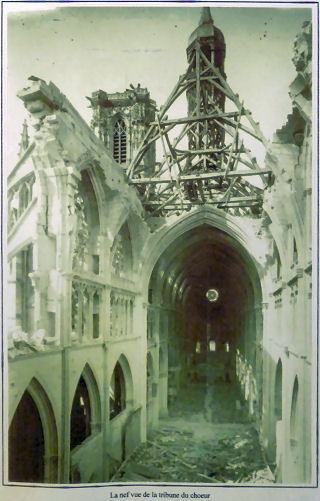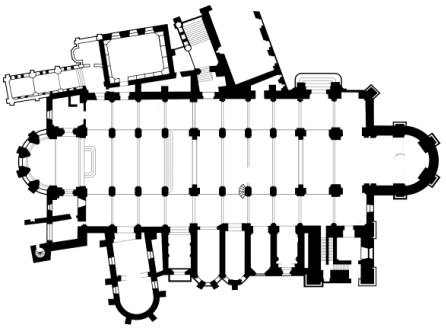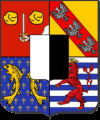 |
 |
 |
 |
 |
|||
 |
 |
 |
cathedrals in Lorraine |
||
|
|
||
related pages: |
The Three Bishoprics - les trois évêchés - were a province in pre-revolutionary France. They were the prince-bishoprics of Toul, Metz and Verdun in the region of Lorraine, to the north-east of France near the German border. Originally States of the Holy Roman Empire, the dioceses were fought over by Protestant Germans and Catholic French, including Henry II, king of France [1547-1559], until they were awarded to France in 1648 after the Thirty Years’ War. There are a couple of unusual cathedral design features that are associated with this region - a ‘cross of Lorraine’ floor plan, and double apses. |
|||||||||||||||||||||||||
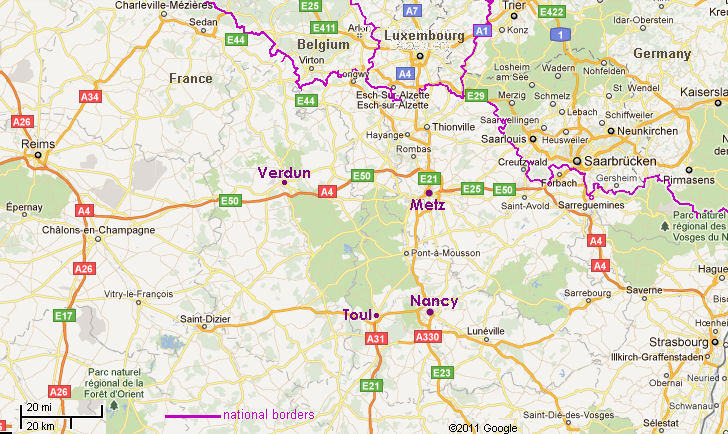 |
||||||||||||||||||||||||||
francenew : on first arriving in France - driving Marianne - a French national symbol, with French definitive stamps the calendar of the French Revolution the
6th bridge at Rouen: Pont Gustave Flaubert, the French umbrella & Aurillac the
forest in Aquitaine, as seen by francois mauriac, and
today the Citroën
2CV: Pic
du Midi - observing stars clearly, A64 Carcassonne,
A61: world heritage fortified city mardi gras! carnival in Basque country what a hair cut! m & French pop/rock country life in France: the poultry fair short
biography of Pierre (Peter) Abelard |
Verdun, Metz and Toul were all garrison towns.
One of the ancient customs of this diocese was a celebration termed in ecclesiastical annals as the ‘Sepelitur Alleluia’ [Alleluia buried].
MetzAnother of the Three Bishoprics is Metz. This town was captured by the Germans in 1870-71. Metz was returned to France at the end of World War One as part of the Versailles Settlement. The Germans invaded again in 1940, being pushed out again in 1944. The town has a large Gothic cathedral and, with 70,000 sq. ft / 6,496 m² of glass, is said to have the largest glass area in any cathedral. This lends it the nickname of “God’s Lantern”. Some of the glass is 13th and 14th century, but most of it is 20th century and includes some by Marc Chagall. In France, only Beauvais and Amiens have higher naves than the 41.41 m nave of Metz cathedral. It was given a fashionable neo-classical portal in 1764. Fortunately, this was demolished after a fire in 1877 and was replaced by a neo-gothic front, built between 1898 and 1903.
Unusually, this church is oriented south-west to north east, due to the constraints of the Moselle Valley site. The main west entrance was, therefore, at the south-west. See also cathedral orientation. Germans are good at destroying beautiful things, even accidently. In May 1877, Metz was under German control. Fireworks in honour of their emperor William II were set off from the roof of the cathedral. The fire caused by the fireworks destroyed ‘the forest’, as well as the roof. double apsesVerdun, Nevers and Besançon each have two apses. VerdunVerdun is the largest Romanesque cathedral in France. Not satisfied with two apses, the builders of Verdun cathedral also gave it two transepts, to be seen in the satellite view below.
The cathedral at Verdun also sustained substantial damage during the destruction wrought by the First World War. The western Romanesque apse was partially destroyed by German bombardments in 1916; restoration then took fourteen years from 1919 to 1935. The stained glass windows were destroyed, and were remade by the Maison Gruber. After the end of the war, as the rubble was cleared away, a twelfth-century subterranean crypt was discovered under the ruins. On 21 February 1916, a German shell hit the cathedral and among the rubble of the partial collapse was discovered the Romanesque Doorway of the Lion, whose existence previously had not even been suspected.
The traditional design of a church is in the shape of a cross, with the nave being the upright and the transept being the horizontal bar. The transept of a cathedral can be obscured by side chapels, as for instance in Amiens cathedral. To study cathedral plans, French cathedral plans is very helpful.
NeversAbout 180 miles/290 km to the southwest is another cathedral with a double apse design at Nevers.
Nevers has an unusual west front. It also has one of the most impressive apse buttressing in France (see also Bourges and Le Mans cathedrals).
An excellent panorama of the interior can be seen at learn.columbia.edu.
The RAF accidently bombed Nevers cathedral on the night of 15th - 16 July, 1944; The bombs exploded in the cathedral which, of course, smashed all the original stained glass. This destruction has resulted in the cathedral now having various bright modern glass of dubious quality. The modern glass artists are Raoul Ubac, Gottfried Honegger, Claude Viallat, Jean-Michel Alberola and François Rouan. One hundred and thirty modern windows have been fitted, and the repairs to the cathedral took about thirty years.
Besançon: Cathedral of Saint-JeanBesançon is about 200 km / 125 miles south of the region of Lorraine.
Another double-apsed cathedral, also far south of the Three Bishoprics region.
This cathedral also has an elaborate astronomical clock (1860) with 70 dials and 122 indicators, considered one of the masterpieces of the genre. Located in the loop of an oxbow on the Doubs river, the citadel city of Besançon is said to have been the first green town in France. Besançon is also well known as a city of art, having what is said to be the most important art museum outside of Paris. It also has a major Vauban Unesco World Heritage site.
Note: Rodez cathedral, in Aveyron,
Languedoc, also has a double apse. the cross of lorraineA cross of Lorraine is a christian cross with two bars instead of one.
This cross was a pre-heraldic emblem of the Kingdom of Hungary, being used on their coins at the end of the 12th century before being included in the royal arms. Originally known as the cross of Anjou, the double cross of Lorraine has been part of the family emblems of the dukes of Lorraine, since 1473. Then René II, son of Yolande d’Anjou became duke of Lorraine. The cross of Anjou (then sometimes called the cross of Jerusalem), was included on seals, coins and on the Tapestry of the Apocalypse. During the siege of Nancy in1477, Duke René II used the cross as a rallying point and symbol. When the siege was lifted, the cross became very popular in Lorraine, its name being changed from from ‘cross of Anjou’ to ‘cross of Lorraine’ by heraldists in the 16th century. The original version with equal length cross bars is also sometimes called the cross of Burgundy. There are all sorts of tales about the origins of the cross of Lorraine, most of which will be just stories. Here are some of them. One theory of the cross’s origin is that it represents a reliquary containing a piece of the true cross, revered by the Dukes of Anjou, from Louis I (1339-1384). This reliquary, stored at Baugé, had a double cross. Another theory is the cross had its origin in the double transepts found in some churches. Much weight is given to the idea that the double cross is symbolic of the cross to which Jesus was attached. In this hypothesis, the second, smaller cross represents the titulus, the name label ordered by Pontius Pilate to be placed on the cross. [On the label, the abbreviation INRI was written. this is short for Iesus Nazareus Rex Iudeorum - Jesus of Nazareth King of the Jews.] Between 1871 and 1918, and between 1940 to 1944, the northern third of Lorraine was annexed to Germany, along with Alsace. During those periods, a modified version of the cross served as a rallying point for French ambitions to recover its ‘lost’ provinces. This historical significance lent it considerable weight as a symbol of French patriotism. In June 1940, the modified cross became the symbol of Free France, thanks to Lieutenant Commander of Argenlieu Thierry, who wrote to General de Gaulle that the Free French needed a cross to fight against the German swastika. There are two versions of this cross, the original version where the cross bars are of equal size and spaced widely apart, and the more recent version, also known as the parochial cross, with a smaller and a larger bar quite close together.
The French region of Lorraine consists of four départements, Meurthe-et-Moselle (54), Meuse (55), Moselle (57) and Vosges (88).
end notes
|
|||||||||||||||||||||||||
© abelard, 2011,30 september the address for this document is https://www.abelard.org/france/cathedrals_in_lorraine.php |


